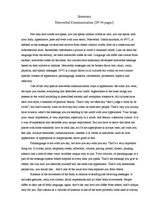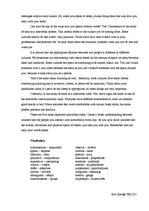-
Summary
That’s the same about touching as well. Generally, most cultures have some taboos concerning touching that is invasive, violent, or perceived as unnatural. Think about your handshake; think if a peck on the cheek is appropriate, all these things are very important.
Olfactory, or the study of smell as a nonverbal code. Yes, that’s right, the smell is one of the nonverbal communication ways. Everyone have different attachments to what we consider good smells or bad. Many societies feel more comfortable with natural body odors, but some prefers perfume and sterilize.
These are five most important nonverbal codes. Create a better understanding between yourself and the people you interact with nonverbally every day. As you now move yourself into the mental, emotional and physical space of others, you take you with you. Remember that not only your words speak.
…
Nonverbal Communication (29-54 pages) Not only said words can speak, you can speak without words as well, you can speak with your body, appearance, pose and even with your smell. Nonverbal Communication, or NVC, is defined as the message we send and receive from others without words, both on a conscious and subconscious level. Remember, sometimes a picture is worth a thousand words. Like we learn the language from the society, we learn nonverbal codes as well. Language can differ one culture from another, nonverbal codes do the same. All cultures have separately developed nonverbal message based on their collective realities. Nonverbal messages can be broken down into visual, vocal, physical, and spatial messages. NVC is a major factor in all cultures but within its own culture-specific context of appearance, paralanguage, kinesics, chronemics, proxemics, haptics, and olfactory.


